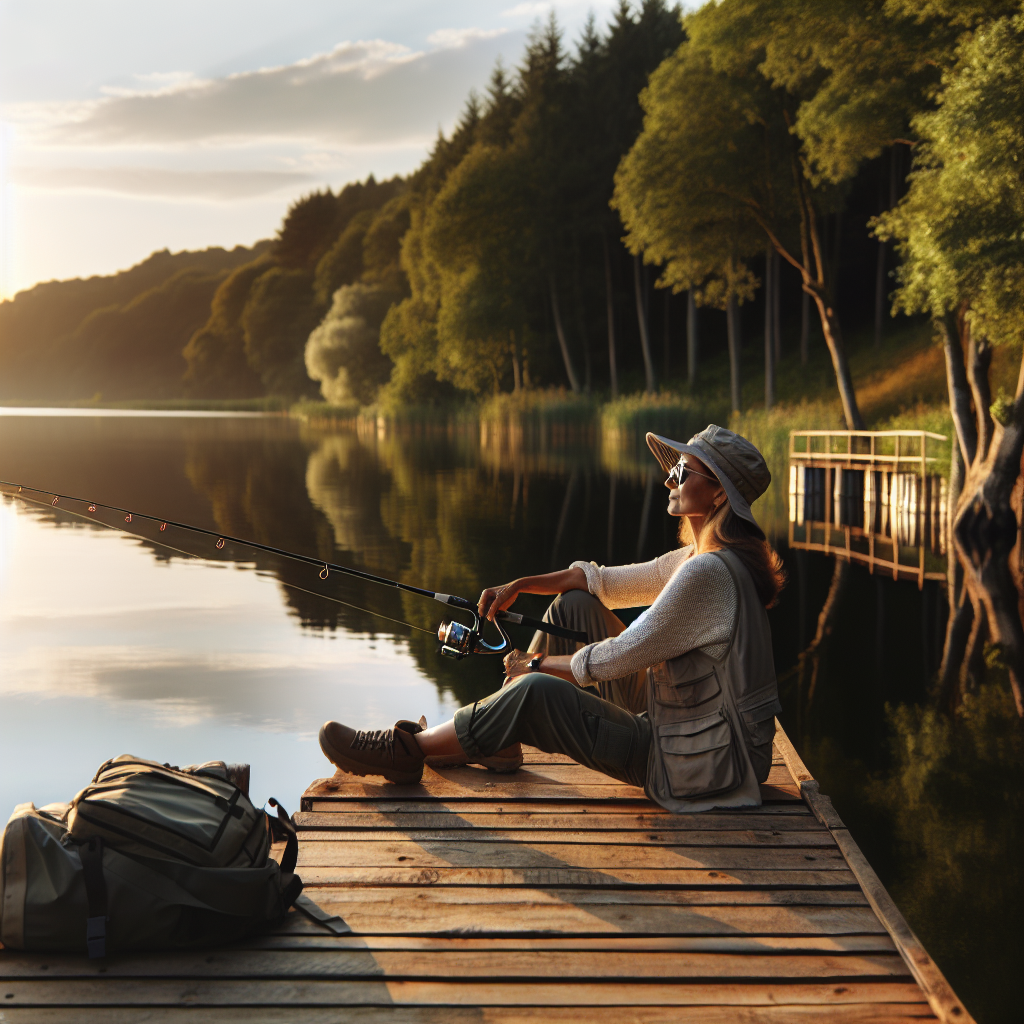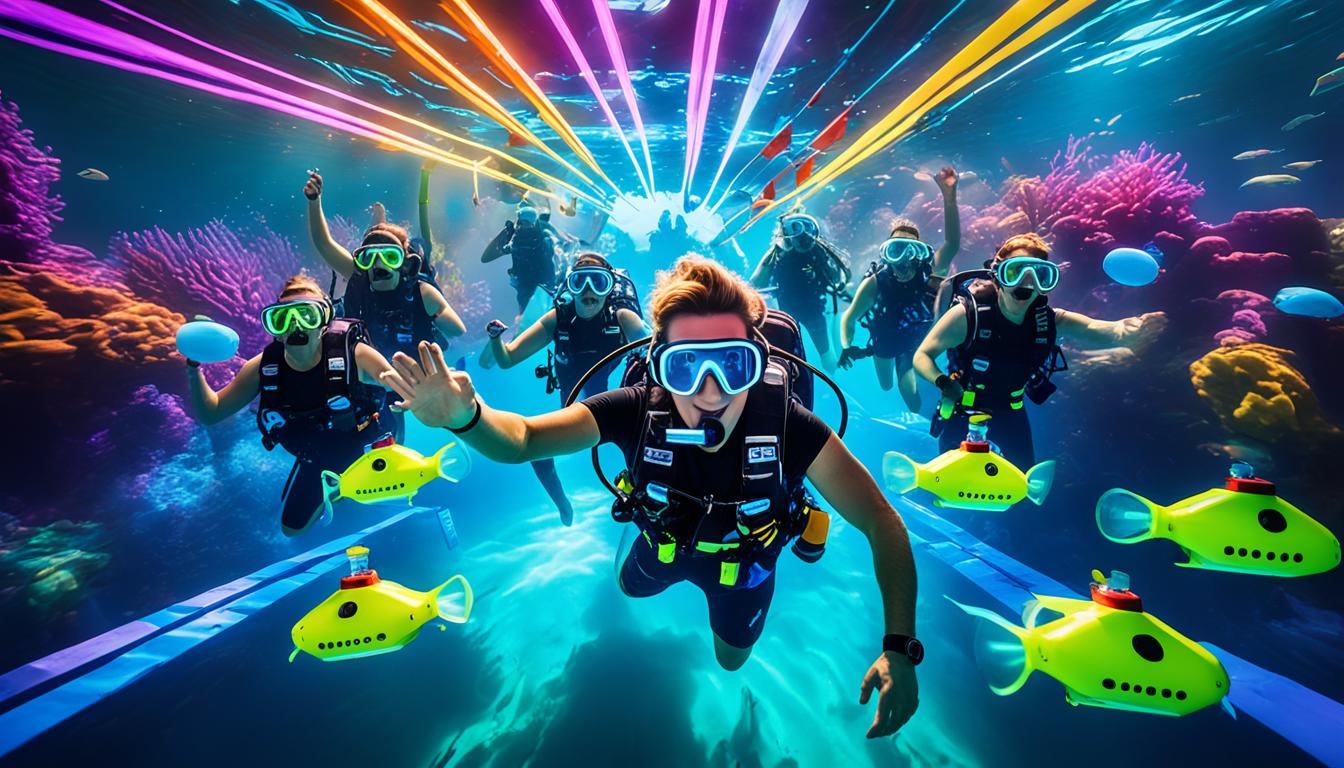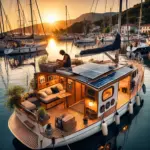
Key Takeaways
- Sonar technology allows for precise fish location, reducing unnecessary bycatch and promoting sustainable fishing.
- Underwater drones, equipped with cameras and sensors, can explore hard-to-reach areas, helping to protect vulnerable ecosystems.
- Sustainable fishing practices, aided by technology, ensure fish populations and their habitats are preserved for future generations.
- Educating and equipping fishermen with these technologies is crucial for balancing economic and environmental interests.
- Collaboration among all stakeholders is key to overcoming challenges and ensuring the longevity of marine resources.
Quick Guide: Sonar Tech, Drones & Green Fishing
Let’s dive into the fascinating world where traditional angling meets modern technology. Imagine fishing where you’re not just casting lines, but also making strides towards ocean conservation. That’s what we’re here to explore.
The Pulse of the Ocean: Advancements in Sonar for Sustainability
When you think of sonar, you might picture a submarine navigating dark depths. But did you know that sonar is also a fisherman’s best friend? Here’s the deal: sonar sends out sound waves that bounce back when they hit something, like a school of fish. This gives us a crystal-clear picture of where the fish are hiding, all without disturbing their natural habitat.
How Sonar Elevates Eco-Friendly Fishing
With sonar, we’re not fishing blindly. We can target just the fish we’re after, which means:
- We’re not catching – or harming – the ones we don’t want.
- We’re saving time and fuel, which is good for the wallet and the planet.
- We’re keeping fish populations healthy by not overfishing. That’s a win for everyone.
Cutting-Edge Sonar: Identifying Schools without Schools of Thought
Today’s sonar tech is smarter than ever. It can tell us the size of the fish, their species, and even their behavior. Imagine knowing if the fish are feeding or just chilling out. That’s powerful info that helps us fish smarter and more sustainably.
Underwater Drones: Submersible Scouts of the Sea
Now, let’s talk about underwater drones, or as I like to call them, ‘submersible scouts’. These are not your average drones. They’re like remote-controlled submarines that give us a live feed of what’s happening under the waves.
The Role of ROVs in Responsible Fishing
Underwater drones are game-changers for responsible fishing. They can go where it’s too deep or dangerous for us, sending back images and data that help us understand the underwater world better than ever before.
And because they’re so good at exploring, they can help us:
- Find the best fishing spots without disturbing the ecosystem.
- Monitor marine life, so we know where and when to fish responsibly.
- Keep an eye on the health of the ocean – which keeps us all in business.
Navigating New Depths: Drones Dive into Data Collection
These drones do more than just take pretty pictures. They collect data on water temperature, salinity, and even pollution. This information is like gold for keeping our fishing practices sustainable and our oceans healthy.
And here’s something cool: drones can also help us map the ocean floor, so we know the best places to drop our lines – or where to avoid so we don’t damage sensitive habitats.
Reeling in Responsibility: Practices for a Sustainable Tomorrow
When we talk about fishing, it’s not just about the catch of the day. It’s about making sure there’s a catch for tomorrow, too. Sustainable fishing is the way to do that. It’s about taking what we need today while making sure there’s plenty left for the future.
And here’s how we’re doing it:
- Using sonar and drones to find fish without overfishing.
- Setting up Marine Protected Areas (MPAs) where no fishing is allowed, giving fish a safe place to grow and thrive.
- Working with scientists to understand fish populations and how we can fish without hurting them.
Tactics for Keeping Fisheries Thriving
It’s all about balance. We want to catch fish, sure, but we also want to keep the oceans full of life. That means:
- Following rules and regulations that protect fish stocks.
- Using gear that doesn’t damage the ocean floor or catch too many young fish.
- Sharing what we learn with other fishermen, so we’re all fishing smarter.
By doing these things, we’re not just fishermen – we’re guardians of the sea. And that’s a title to be proud of.
To Cast or Not to Cast: Making Informed Decisions with Technology
Every time we set sail with our rods and reels, we’re faced with choices. But now, technology is giving us the power to make smarter, more informed decisions. It’s not just about whether the fish are biting; it’s about understanding the entire marine environment and how our actions affect it.
Smart Sonar: The Tool for Selective Fishing
With smart sonar, the guesswork in fishing is becoming a thing of the past. It’s a tool that lets us see beneath the waves, pick out the fish we’re after, and leave the rest undisturbed. This means less bycatch – those unwanted fish that get caught up in the process – and more sustainability.
But it’s not just about avoiding the wrong fish. Smart sonar helps us protect entire ecosystems. For instance, if we know where the spawning grounds are, we can steer clear, giving fish populations the chance to replenish.
Drone Deployments: Automating the Art of Angling
Drones are transforming the way we fish. They’re like our eyes in the sky – or, more accurately, in the deep. With a drone, we can scout out the best spots before we even cast a line. This not only saves time but also ensures that we’re fishing in places that won’t disrupt the delicate balance of marine life.
Moreover, drones can be programmed for repetitive tasks, like monitoring specific areas for illegal fishing activities, which helps protect our shared resources. They’re the perfect blend of technology and stewardship.
Seas of Change: Bridging the Gap Between Tech and Tradition
Embracing new technologies doesn’t mean we throw out the old ways. There’s wisdom in traditional fishing practices that have been honed over generations. The trick is to blend that time-tested knowledge with the best that technology has to offer. This synergy is where the magic happens, leading to a sustainable future for fishing.
The Cost of Innovation: Making Advanced Tech Accessible
Let’s face it, the coolest gadgets often come with a hefty price tag. But when it comes to sustainable fishing, the cost shouldn’t be a barrier. It’s about finding ways to make these tools – sonar, drones, and the like – affordable and accessible to all fishermen, not just the big commercial operations.
Because when everyone has access to the technology that helps protect our oceans, we all win. That’s why we’re seeing more and more initiatives aimed at subsidizing costs or providing training to make these tools a part of every fisherman’s tackle box.
Sailing Smooth: Training for Tomorrow’s Tools
Getting the gear is one thing; knowing how to use it is another. That’s why training is crucial. It’s about teaching fishermen not just to push buttons, but to understand the data they’re seeing and to use it to make better decisions for the health of the oceans and their livelihoods.
And let’s not forget about the next generation. By bringing young people into the fold, showing them the ropes of both traditional methods and new tech, we’re setting up a sustainable fishing industry for decades to come.
For example, consider a program that provides sonar units to small-scale fishermen. They’re trained not just in how to use the devices, but also in interpreting the data to fish more sustainably. It’s a real-life case of technology empowering people to make a difference.
Sustainable Seas: The Collaborative Net We Must Cast
It’s clear that the future of fishing isn’t just about what we catch, but how we catch it. And the “how” is something we can all contribute to. From the individual angler to the tech giants creating the latest gadgets, we’re all part of the solution.
But this isn’t just about fishing; it’s about building a community that values the ocean and all it has to offer. It’s about sharing knowledge, resources, and a commitment to doing things better. This is the net we must cast – wide, inclusive, and supportive.
Forging Alliances: Fishers and Tech Tycoons
The partnerships forming between fishermen and tech companies are a beacon of hope. Together, they’re developing tools that are not just effective, but also respectful of the ocean’s resources. These collaborations are proving that technology can be a force for good, especially when it’s guided by the people who know the seas best – the fishermen themselves.
And it’s not just about the big players. Community groups, local NGOs, and even schools are getting involved, turning sustainable fishing into a movement that’s as grassroots as it is global.
Policy that Protects: Enacting Ecosystem-Smart Regulations
- Implementing fishing quotas based on accurate fish population data from sonar and drone technology.
- Establishing no-catch zones to allow fish populations to recover and thrive.
- Regulating gear types to minimize habitat destruction and bycatch.
- Enforcing penalties for illegal fishing practices detected by monitoring technology.
- Encouraging community involvement in policymaking for localized sustainable fishing strategies.
With these policies in place, we’re not just fishing; we’re stewarding the sea. It’s about making rules that are good for the fish, good for the ocean, and good for us. And it’s not about limiting fishing; it’s about ensuring that there’s fish to catch now and in the future.
Most importantly, these regulations aren’t just words on paper. They’re actionable, enforceable standards that can make a real difference. And with the data we’re getting from our high-tech helpers, we can make sure these policies are doing what they’re supposed to do: keeping our seas full of life.
Because, at the end of the day, we all want the same thing – a healthy ocean teeming with fish. And with smart policies informed by cutting-edge technology, that’s exactly what we can achieve.
Ocean’s Keepers: The Promise of Tomorrow’s Fishing
As we chart the course for the future of fishing, we’re not just looking at the horizon; we’re looking at the deep blue sea beneath us. We’re envisioning a world where the oceans are as vibrant and full of life as they’ve ever been – a world where fishing is not just an occupation, but a partnership with nature.
FAQs: Sonar, Drones, and Sustainability in Fishing
Let’s tackle some of the burning questions about how technology is shaping the future of fishing and what it means for sustainability.
What Is Sonar Fishing and How Does It Promote Sustainability?
Sonar fishing is using sound waves to find fish underwater. It’s like echolocation – sending out a sound that bounces back to tell us where the fish are. And it’s sustainable because it helps us catch only what we need, without harming other marine life or habitats.
Can Underwater Drones Change the Way We Fish?
Underwater drones are changing the game. They’re like our underwater eyes, scouting out the ocean to find the best places to fish while avoiding sensitive areas. They’re helping us fish smarter, not harder, and that’s good news for the ocean.
How Do We Balance Fishing with Marine Conservation?
It’s all about smart choices. Using technology to understand the ocean better, following regulations that protect marine life, and always being mindful of the impact we have. It’s a delicate dance, but one we’re learning to master.
And it’s not just on us. Consumers play a role too, by choosing sustainably caught seafood and supporting policies that protect our oceans.
What Challenges Do Fishermen Face with New Technologies?
New tech can be pricey and complex. There’s a learning curve, and not everyone can afford the latest gadgets. But we’re seeing more training and funding opportunities to help fishermen get on board with these new tools.
Are There Affordable Tech Solutions for Small-Scale Fishermen?
Yes, there are. From subsidized sonar units to community-driven drone programs, we’re finding ways to make sure that all fishermen can use these technologies. It’s about leveling the playing field so that everyone can fish sustainably.
And remember, it’s not just about having the gear; it’s about knowing how to use it. That’s why education and training are just as important as the technology itself.
In the end, the promise of tomorrow’s fishing lies in our hands today. With every cast we make, every net we throw, and every policy we support, we’re shaping the future of our oceans. So let’s make it a good one, filled with plenty of fish, clear waters, and blue skies above. Because when we fish sustainably, we’re not just catching dinner; we’re ensuring that our seas remain bountiful and beautiful for all the tomorrows to come.






